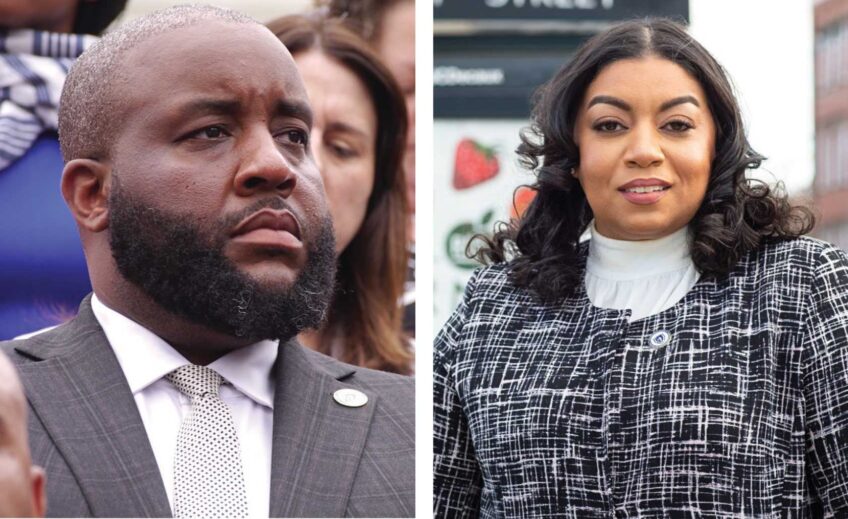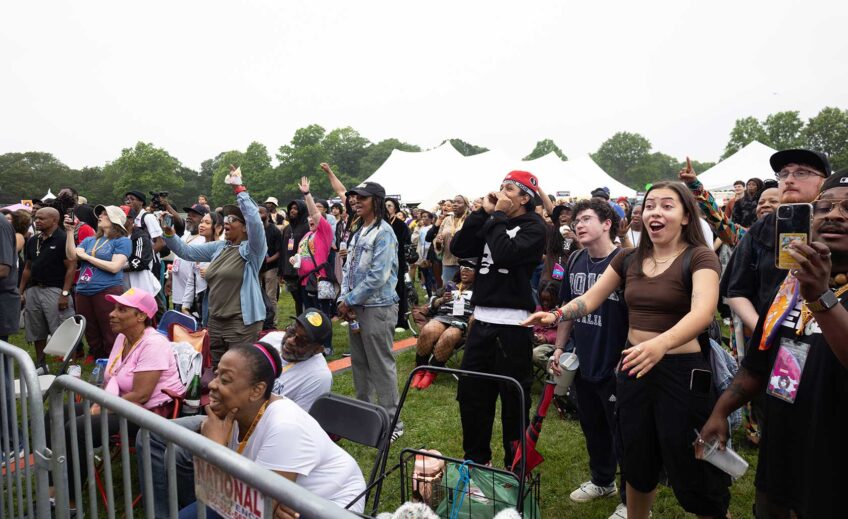On a quiet street on Beacon Hill’s north slope, a small plaque marks the former home of John Sweat Rock, a black “physician, dentist, lawyer and abolitionist.” His home was one of Harriet Tubman’s stopping places on visits to Boston.
Further up Phillips Street was the home of Rev. Leonard Grimes, a leader in opposition to the Fugitive Slave Act of 1850. Grimes, a free born black, was pastor of the nearby Twelfth Baptist Church. The church came to be called “the fugitive slave church” as large numbers of escaped slaves found refuge there.
Five blocks away, on Hancock Street, stands the house of U.S. Sen. Charles Sumner. The white senator was a radical anti-slavery leader. In 1856, he was beaten nearly to death by South Carolina Congressman Preston Brooks after delivering an anti-slavery speech in the Senate Chamber.
The cane Brooks used to thrash Sumner is on display in Boston’s Old State House.
These sites are mapped and described in a new 64-page illustrated book, “Walking Tours of Civil War Boston,” published in June by the Freedom Trail Foundation.
The book, written by Barbara Berenson, an attorney and lifelong history buff, features important sites and people of Boston’s abolitionist movement along with more well-known monuments and statues honoring heroes of the time.
The book contains four self-guided walks: “Civil War on the Freedom Trail” follows the well-known “red line” trail and explores how the early Patriots later inspired Boston’s abolitionists; “Back Bay Statues” describes the public art honoring anti-slavery and Civil War heroes; “Boston Harbor Tour” includes Fort Warren on Georges Island, where Confederate soldiers were imprisoned; and “Beacon Hill” explores the roles of the black and white communities living and working on Beacon Hill.
In Beacon Hill, the black history plaques were created and placed by the Heritage Guild, a group of African American women working to give public recognition to the history of Boston’s black community. Berenson’s Civil War tour of Beacon Hill includes several Heritage Guild sites and sites on the Museum of African American History’s Black Heritage Trail. Her tour also includes the homes of whites such as Sumner, slavery opponent and women’s rights advocate Louisa May Alcott, and Julia Ward Howe, who wrote the words to “The Battle Hymn of the Republic.”
On the Freedom Trail walk, the site of William Lloyd Garrison’s abolitionist newspaper “The Liberator” is noted at 12 Post Office Square. Faneuil Hall is noted for being the venue of “fiery abolitionist speeches” by Garrison, Frederick Douglass and others.
A key site is 26 Court St., currently the headquarters of the Boston Public Schools. Slaves captured under the Fugitive Slave Act were held and tried in the federal courthouse that once stood there.
In 1851, a mob of black abolitionists stormed this courthouse and freed fugitive Shadrach Minkins.
But fugitive Thomas Sims, arrested shortly after Minkins, was sent back to slavery when the state’s Supreme Judicial Court ruled that Congress had lawfully enacted the Fugitive Slave Act.
Early on, Berenson said, Boston was divided on the capturing of fugitive slaves. The Fugitive Act had been part of a larger compromise aimed at staving off secession and war, she noted.
“When Thomas Sims was sent back, the abolitionists were outraged — but many others in Boston supported that,” she explained, standing near the John Sweat Rock house on a recent June morning. “Even people who were anti-slavery supported it. There was real hope this compromise would avert a war.”
But by 1854, when fugitive Anthony Burns was marched through town on his way back to the South and slavery, resistance to the Fugitive Act had risen.
“The reaction in Boston in 1854 when Burns was sent back was tremendous,” she said. “The Burns case converted a lot of people. It galvanized the city. It was really a turning point.”
After the earlier freeing of Minkins, one participant had called the raid “the most noble deed done in Boston since the destruction of the tea” in 1773.
That’s the type of connection Berenson found fascinating in her research.
“One of the things I thought was so incredible about the abolitionist movement was how motivated people were by the revolutionary era Patriots,” she said. Revolutionary pride showed up often in anti-slavery rhetoric.
“When they spoke at Faneuil Hall they called to mind the stirring speeches given there by the Patriots,” she said. “When Garrison set up ‘The Liberator,’ he said he was doing it in the shadow of Bunker Hill.”
Berenson’s interest in writing this guidebook was inspired by years of showing Boston history to her now-grown children, she said, and also by coming to work at the John Adams Courthouse every day, where she works as a senior attorney with the Massachusetts Supreme Judicial Court. Strolling downtown daily, Berenson is surrounded by history. She’s been transformed by it, and wants to pass that knowledge on.
“For years, when I walked by the Tremont Temple Baptist Church and the Orpheum Theater, I saw them as they are today,” she said. “But now I think about these incredible celebrations that took place at those sites on Jan 1, 1863, when Lincoln issued the Emancipation Proclamation.”
“Walking Tours of Civil War Boston” is available for purchase online at www.thefreedomtrail.org and at visitor information centers around Boston.






